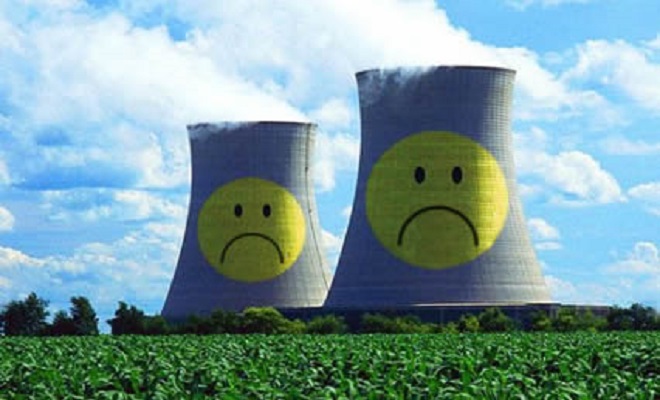 21st Century Wire
21st Century Wire
Geo Watch
Recent Ohio Nuclear Plant Shutdown Is Tip of Much Bigger ‘Radioactive Iceberg’
by Patrick Henningsen, 21st Century Wire.com:
Earlier this week in Oak Harbor, Ohio, the Davis-Besse Nuclear Power Plant was shut down after a steam leak was detected in a non-radioactive portion of the facility.
FirstEnergy Corp officials insist that the leak has now been repaired and it expect the reactor to be back up to full-power by today. No cause for alarm, right?
 This is not the first time that the David-Besse plant has been in the news. The facility has been the center of controversy since 2000, and critics say that it’s one of the country best examples of the danger presented by America’s crumbling nuclear infrastructure.
This is not the first time that the David-Besse plant has been in the news. The facility has been the center of controversy since 2000, and critics say that it’s one of the country best examples of the danger presented by America’s crumbling nuclear infrastructure.
Back in 2002 the plant was forced into shut down mode after this shocking discovery:
“The Ohio plant was closed in 2002 after inspectors found that an acid leak had nearly eaten through the reactor’s 6-inch-thick steel cap. The corrosion at the plant near Oak Harbor was the worst ever found at a U.S. reactor…”
Also back in 2001, key staff were charged with lax practices, although certain individuals were eventually reinstated:
“The Nuclear Regulatory Commission Monday made it possible for former Davis-Besse engineer Andrew Siemaszko to resume his career in the nuclear industry as early as April. But Siemaszko – who was convicted last August of deceiving the government about the plant’s dangerous operating condition in the fall of 2001 – would first have to get approval from his probation officer… Siemaszko, who has maintained his innocence, was one of four workers who prosecutors claimed were at the center of the cover-up.”
Indeed, Davis-Besse seems to be indicative of a much wider, nationwide epidemic – one where the risks to public safety are simply too large to ignore. As Hemlock Tea Room reports, the problem is absolutely systemic:
“The NRC (Nuclear Regulatory Commission)…
Recently acknowledged that several US power plants are “embrittled”, that the material used in their construction was not up to par with the 1977 law requiring the use of “new” materials, and that brittleness will be their demise.
How did they explain this? Because of material requirements when he aged plants were built, and there have been no updates since the regulatory law on materials passed congress. The NRC did not likely mean to let the general public know this, but at the March 2015 ‘Public meeting’ and the summary issued by the NRC, we find the data:
“Summary of the March 19, 2013 Public Meeting Webinar Regarding Palisades Nuclear Plant“
Someone asked the NRC:
“Which are the other most embrittled plants in the U.S.? How many PWRs will reach their screening criteria in the next 10 years?”
The NRC responded:
“The NRC currently estimates that the following plants will exceed the PTS screening criteria of 10 CFR 50.61 during their 20-year period of operation beyond their original 40 year licenses. Updated fluence calculations, capacity factors changes, power uprate, new surveillance data, and improved material property information (i.e., the use of direct rather than correlative measurements of the vessel material’s resistance to fracture) can change these estimates…
1. Point Beach 2 (2017)
2. Palisades (2017)
3. Diablo Canyon 1 (2033)
4. Indian Point 3 (2025)
5. Beaver Valley 1 (2033)”
“Similarly, America’s main nuclear regulator – the Nuclear Regulatory Commission – made numerous assumptions before Fukushima that turned out to be totally false. For example, the NRC wrongly assumed:
(1) The containment vessels in nuclear reactors always maintain their containment. In reality, Fukushima’s reactors lost all containment.
(2) If radioactive gasses leak, they can only leak a maximum of 1% of their radioactive fuel per day. In reality, Fukushima’s lost 300% per day. In other words, the radioactive gases were leaving the containment every 8 hours.
This is only the tip of a much bigger nuclear iceberg in America.
We can conclude here that by ignoring the fundamentals of engineering material science – the nuclear industry is putting us all at risk.
Further Reading:
Clinton-Uranium-Russia-Rosatom : What’s the catch?
Read More @ 21st Century Wire.com












